Discolored Skin Patches
46 Common Skin Disorders: Pictures, Remedies & Treatment
|
Acne Allergic Reaction Causes Autoimmune Disease Bleeding into the Skin Bug Bites and Stings Basal Cell Carcinoma (Pictures) Burns Boils Cold Sores Contact Dermatitis Candida Fungus Skin Infection Diaper Rash Dermatomyositis Dermatitis Herpetiformis Eczema Fungal Infection Hay Fever Rash Hemangioma Hives Kaposi's Sarcoma Lacerations Macule Mask of Pregnancy Neurofibromatosis Paleness Psoriasis Rash Ringworm Rosacea Radiation Therapy Ringworm Shingles Skin Rash Stasis Dermatitis And Ulcers Skin Injury Skin Lesions Sunburn Seborrheic Keratosis Skin Cancer (squamous) Scleroderma Strawberry Nevus of Skin Tinea Versicolor Skin Lesion KOH Exam Vitiligo Wood's Lamp Examination Warts | |
| Acne | 
|
| Allergic Reaction Causes (Allergic Purpura) | 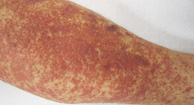
|
| Autoimmune Disease | 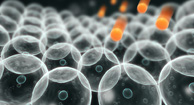
|
| Bleeding into the Skin | 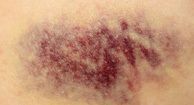
|
| Burns | 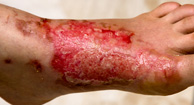
|
| Basal Cell Carcinoma (Pictures) | 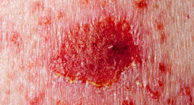
|
| Bug Bites |
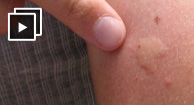 Mosquito Bites 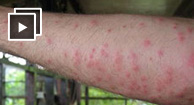 Fly Bites 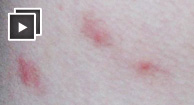 Flea Bites 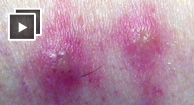 Chigger Bites 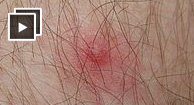 Tick Bites 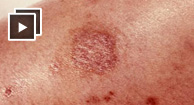 Spider Bites 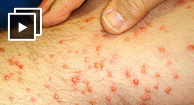 Fire Ant 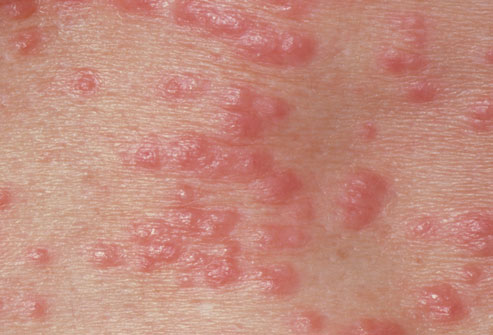 Scabies 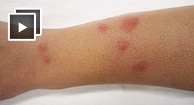 Bed Bug Bites 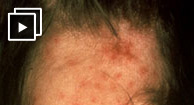 Lice |
| Boils (Skin Abscesses) | .jpg)
|
| Cold Sores | 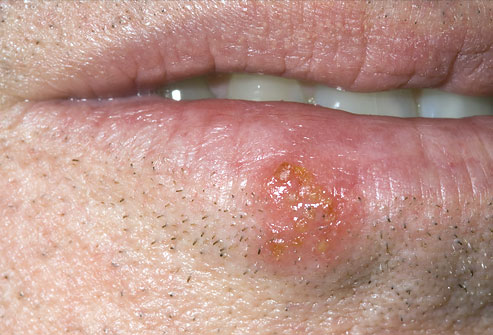
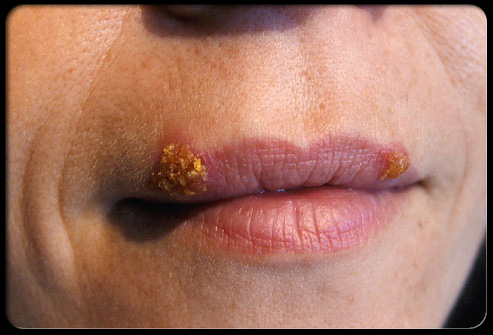
|
| Contact Dermatitis | 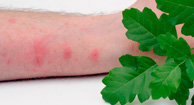
|
| Candida Fungus Skin Infection | 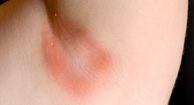
|
| Dermatitis Herpetiformis | 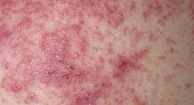
|
| Dermatomyositis | 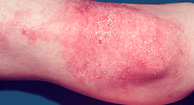
|
| Diaper Rash | 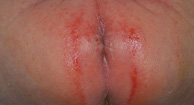
|
| Eczema | 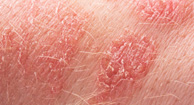
|
| Fungal Infection | 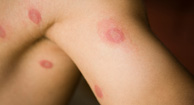
|
| Hay Fever Rash | 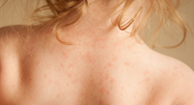
|
| Hemangioma | 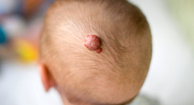
|
| Hives | 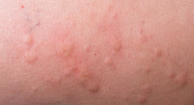
|
| Kaposi's Sarcoma | 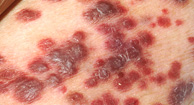
|
| Lacerations | |
| Mask of Pregnancy | 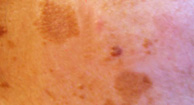
|
| Macule | 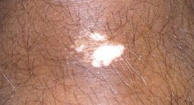
|
| Neurofibromatosis | 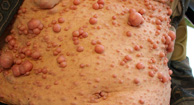
|
| Paleness | 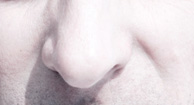
|
| Rash | 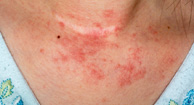
|
| Ringworm (Dermatophytosis or ringworm) | 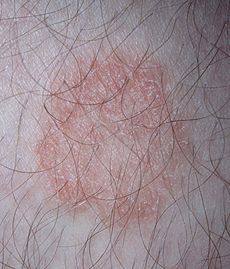
|
| Rosacea | 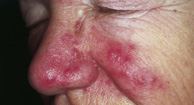
|
| Radiation Therapy | 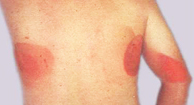
|
| Psoriasis | 
|
| Scleroderma | 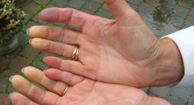
|
| Skin Injury | 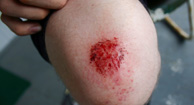
|
| Skin Lesions | 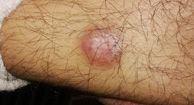
|
| Sunburn | 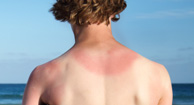
|
| Stasis Dermatitis And Ulcers | 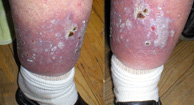
|
| Seborrheic Keratosis | 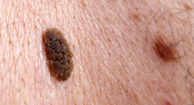
|
| Shingles | Development of the shingles rash Day 1 Day 2 Day 5 Day 6 



|
| Skin Rash | 
|
| Skin Cancer (squamous) | .jpg)
|
| Skin Lesion KOH Exam | 
|
| Strawberry Nevus of Skin | 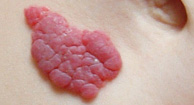
|
| Tinea Versicolor | 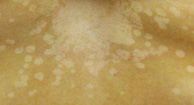
|
| Vitiligo | 
|
| Wood's Lamp Examination | 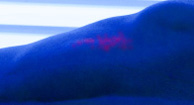
|
| Warts | 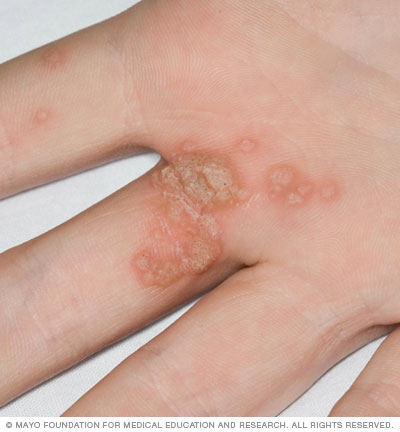
|
|
Skin Injury Cuts pierce through the skin (and sometimes the tissue as well), and scratches are when the skin's surface is scratched by a sharp object. Either or both of these injuries can affect the color of the surrounding skin. Skin Lesions Skin lesions are abnormal growths. There are two categories of skin lesions: primary--such as birthmarks or skin conditions--and secondary--such as blisters, papules, and rashes. Macule Macules are flat areas of discolored skin, found in conditions such as vitiligo, rosacea, sun spots, and skin cancer. They may be lighter (hypopigmented) or darker (hyperpigmented) than the surrounding skin. Fungal Infection Skin is suceptible to fungal infections caused by microorganisms that can spread from person to person. Some common types that are marked by rash include athlete's foot, jock itch, and ringworm. Autoimmune Disease An autoimmune disease is a type of condition in which your body's immune system begins attacking its own healthy cells. A number of these conditions can affect the appearance of the skin, including psoriasis, vitiligo, reactive arthritis, and scleroderma. Rash A rash is a change in the skin's texture that makes it itchy, bumpy, or irritated in some way. It can be caused by a number of things, including diseases, medication, cosmetics, and allergies. Hives Hives, also known as urticaria, are painful, red welts caused by an allergic reaction. They can appear spread out, or come together to form a raised, red, itchy patch. Lacerations Cuts and puncture wounds, also referred to as lacerations, are tears in the skin caused by injury and may result in scarring. Bleeding into the Skin Bleeding into the skin can occur when blood vessels burst from injury, allergic reaction, autoimmune disorders, or the natural aging process. It will appear in small dots or in large, flat, blood-colored patches. Sunburn Overexposure to sunlight can cause skin to become inflamed, blistered, and discolored. Contact Dermatitis Contact dermatitis is inflammation of the skin caused by contact with a certain plant or substance, due to allergic reaction or the substance being an irritant. For instance, poison ivy can cause the skin to become inflamed. Acne When the skin's pores are blocked by dirt, bacteria, or oil, acne can occur, resulting in pustules, cysts, papules, and/or nodules on the skin. Although not life threatening, it can cause scarring and negatively affect self-esteem. Allergic Reaction Causes Allergic reactions to a variety of allergens can cause symtoms in the skin like hives or rash. Causes may include bee stings, pet dander, nuts or shellfish, pollen, and certain medications. Hay Fever Rash A rash can form when pollen and other allergens that cause hay fever come in direct contact with the skin. Red, itchy patches called hives may form after contact, and the skin may appear sunburned and swollen. Eczema Eczema is a common condition in which patches of skin become inflamed and itchy. It is caused by an overactive immune system, and is most common in babies in children, but can affect adults as well. Diaper Rash Diaper rash is a common infant ailment caused by irritation from a soiled diaper, sensitivity to products like lotion, wipes, and detergents, or infection. The irritated area will appear red and inflamed, possibly with blisters or sores. Candida Fungus Skin Infection Candida is a type of fungus naturally present on the human body. However, an overgrowth of this fungus can cause a skin infection, which is often marked by rashes, discolored patches of skin, scaling, and redness. Stasis Dermatitis And Ulcers Stasis dermatitis is an inflammation of the skin that's caused by blood pooling in the legs. It usually occurs in people over the age of 50, and is marked by darkened, scaling, or itchy skin and ulcers. Rosacea Rosacea is a type of chronic skin disorder that can cause a range of symptoms, including redness in the face, visibly broken blood vessels, acne-like breakouts, and bumpy skin texture. Dermatitis Herpetiformis Dermatitis herpetiformis is a very itchy, burning, blistering rash that appears on the elbows, knees, scalp, back, and buttocks. It is often a sign of gluten allergy. Seborrheic Keratosis Seborrhic keratosis is a skin condition in which unsightly, yet harmless growths form usually on many areas of the body, including the chest, shoulders, back, and stomach. Burns Burns from any source—fire, gas, radiation, etc.—can damage skin and body tissue in small patches or larger areas. Skin Cancer (squamous) There are many types of skin cancer, including basal cell carcinoma, squamos cell carcinoma, melanoma, and kaposi's sarcoma, which are usually identified by an unusual patch of skin, discoloring, or growth. Radiation Therapy Radiation therapy can affect the skin and cause side effects like blistering, dryness, itching, and peeling. Tinea Versicolor Tinea versicolor is caused by the overgrowth of yeast that's found on the skin's surface. It can cause patches of lighter- or darker-colored skin that may be itchy and pink, tan, red, or brown. Wood's Lamp Examination Vitiligo and other skin irregularities can be diagnosed with the use of a Wood's lamp examination, which uses light to detect fungal or bacterial skin infections. Skin Lesion KOH Exam A skin lesion KOH exam is a test for whether or not a skin infection is caused by fungus. Dermatomyositis Dermatomyositis is an inflammatory disease that causes weakness in the muscles and a red or violet rash on the face, chest, or elbows. Paleness Paleness is a lighter complexion than you normally have, due to a reduction in blood flow or number of red blood cells. This can be caused by anemia, blockage of an artery, low blood sugar, or loss of blood. Mask of Pregnancy Most women experience a change in skin color during pregnancy. In up to 70 percent of women, the skin on the face darkens, which is also called the "mask of pregnancy," or melasma. Allergic Purpura Allergic purpura is a disease that causes inflammation of the capillaries in the skin, digestive tract, and kidneys. It can cause a purple spotted skin rash, gastrointestinal upsets, inflammation of the joints, and pain. Vitiligo The cause of vitiligo is unknown. However, the main symptom is the loss of pigment (color) in your skin. Strawberry Nevus of Skin Strawberry nevus of the skin, is a reddish-colored birthmark that is typically found on the face, back, scalp, and chest, and usually fades by adolescence. Hemangioma Hemangiomas are noncancerous growths formed by a collection of abnormal blood vessels. Large hemangiomas look like small, red scratches, bumps, or birthmarks. Scleroderma Systemic sclerosis, also known as scleroderma, is an autoimmune condition that increases the production of collagen, causing changes in the appearance and texture of skin. Basal Cell Carcinoma (Pictures) Basal cell carcinoma is a type of skin cancer that forms in the top layer of skin. It's often marked by new growths, old growths that have changed color, size, or texture, or sores that don't heal quickly. Neurofibromatosis Neurofibromatosis 1, also known as von Recklinghausen's disease, affects the skin and peripheral nervous system. Some signs of this disorder include tan spots (cafe-au-lait macules) and freckles under the arms or in the groin area. Kaposi's Sarcoma Karposi's sarcoma is a cancerous tumor caused by the herpes virus. It appears as a raised red or purple patch usually around the mouth, nose, and genital area. Boils and carbuncles Boils and carbuncles are painful, pus-filled bumps that form under your skin when bacteria infect and inflame one or more of your hair follicles. Boils (furuncles) usually start as red, tender lumps. The lumps quickly fill with pus, growing larger and more painful until they rupture and drain. A carbuncle is a cluster of boils that form a connected area of infection under the skin. You can usually care for a single boil at home, but don't attempt to prick or squeeze it — that may spread the infection. Call your doctor if a boil or carbuncle is extremely painful, lasts longer than two weeks or occurs with a fever. Boils Boils can occur anywhere on your skin, but appear mainly on your face, neck, armpits, buttocks or thighs — hair-bearing areas where you're most likely to sweat or experience friction. Signs and symptoms of a boil usually include: A painful, red bump that starts out about the size of a pea Red, swollen skin around the bump An increase in the size of the bump over a few days as it fills with pus (can sometimes reach the size of a baseball) Development of a yellow-white tip that eventually ruptures and allows the pus to drain out Carbuncles A carbuncle is a cluster of boils that form a connected area of infection. Carbuncles often occur on the back of the neck, shoulders or thighs. Compared with single boils, carbuncles cause a deeper and more severe infection and are more likely to leave a scar. People who have a carbuncle often feel unwell in general and may experience fever and chills. When to see a doctor You usually can care for a single, small boil yourself. But see your doctor if you have more than one boil at a time or if a boil: Occurs on your face Worsens rapidly or is extremely painful Causes a fever Is more than 2 inches (5 centimeters) across Hasn't healed in two weeks Recurs Causes Most boils are caused by Staphylococcus aureus, a type of bacteria commonly found on the skin and inside the nose. Boils sometimes develop at sites where the skin has been broken by a small injury or an insect bite, which gives the bacteria easy entry. Risk factors Although anyone — including otherwise healthy people — can develop boils or carbuncles, the following factors can increase your risk: Close contact with a person who has a staph infection. You're more likely to develop an infection if you live with someone who has a boil or carbuncle.Diabetes. This disease can make it more difficult for your body to fight infection, including bacterial infections of your skin.Other skin conditions. Because they damage your skin's protective barrier, skin problems, such as acne and eczema, make you more susceptible to boils and carbuncles.Compromised immunity. If your immune system is compromised for any reason, you're more susceptible to boils and carbuncles. Complications Rarely, bacteria from a boil or more commonly, a carbuncle, can enter your bloodstream and travel to other parts of your body. The spreading infection, commonly known as blood poisoning (sepsis), can lead to infections deep within your body, such as your heart (endocarditis) and bone (osteomyelitis). Although you're likely to see your family doctor or a general practitioner first, you may be referred to a specialist in skin diseases (dermatologist) or infectious diseases. Preparing for your appointment What you can do Write down all your signs and symptoms and when they first occurred. Record how long the lesions lasted and if any recurred. Make a list of all medications — including vitamins, herbs and over-the-counter drugs — that you're taking. Even better, take the original bottles and a written list of the dosages and directions. For boils and carbuncles, some basic questions to ask your doctor include: Are tests needed to confirm the diagnosis? What is the best course of action? Is there a generic alternative to the medicine you're prescribing? Can I wait to see if the condition goes away on its own? What can I do to prevent the infection from spreading? What skin care routine do you recommend while the condition heals? What to expect from your doctor Your doctor is likely to ask you a number of questions, such as: What did the boil look like when it first started? Are your symptoms painful? Have you had a boil or carbuncle before? Are you having fever or chills? Do you have artificial heart valves, joints or other implanted devices? Tests and diagnosis Doctors usually can diagnose boils and carbuncles simply by looking at them. But if you have recurring infections or an infection that hasn't responded to standard treatment, your doctor might suggest sending a sample of the pus to a lab for testing. Many varieties of the bacteria that cause boils have become resistant to certain types of antibiotics, so this test can help determine what type of antibiotic would work best in your particular situation. Treatments and drugs You can generally treat small boils at home by applying warm compresses to relieve pain and promote natural drainage. For larger boils and carbuncles, treatment may include: Incision and drainage. Your doctor may drain a large boil or carbuncle by making a small incision in the tip. Deep infections that can't be completely drained may be packed with sterile gauze to help soak up and remove additional pus.Antibiotics. Sometimes your doctor may prescribe antibiotics to help heal severe or recurrent infections. Lifestyle and home remedies For small boils, these measures may help the infection heal more quickly and prevent it from spreading: Warm compresses. Apply a warm washcloth or compress to the affected area several times a day. This helps the boil rupture and drain more quickly.Never squeeze or lance a boil yourself. This can spread the infection.Prevent contamination. Wash your hands thoroughly after treating a boil. Also, launder clothing, towels or compresses that have touched the infected area, especially if you have recurrent boils or carbuncles. Here are further guidelines. |
